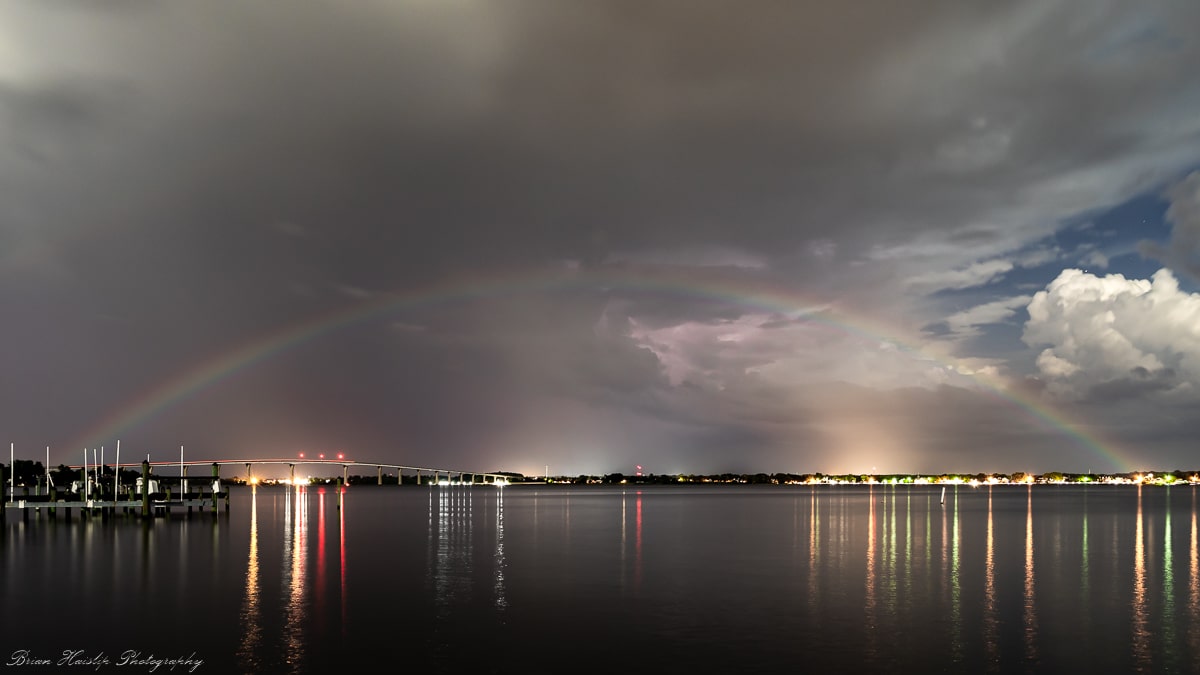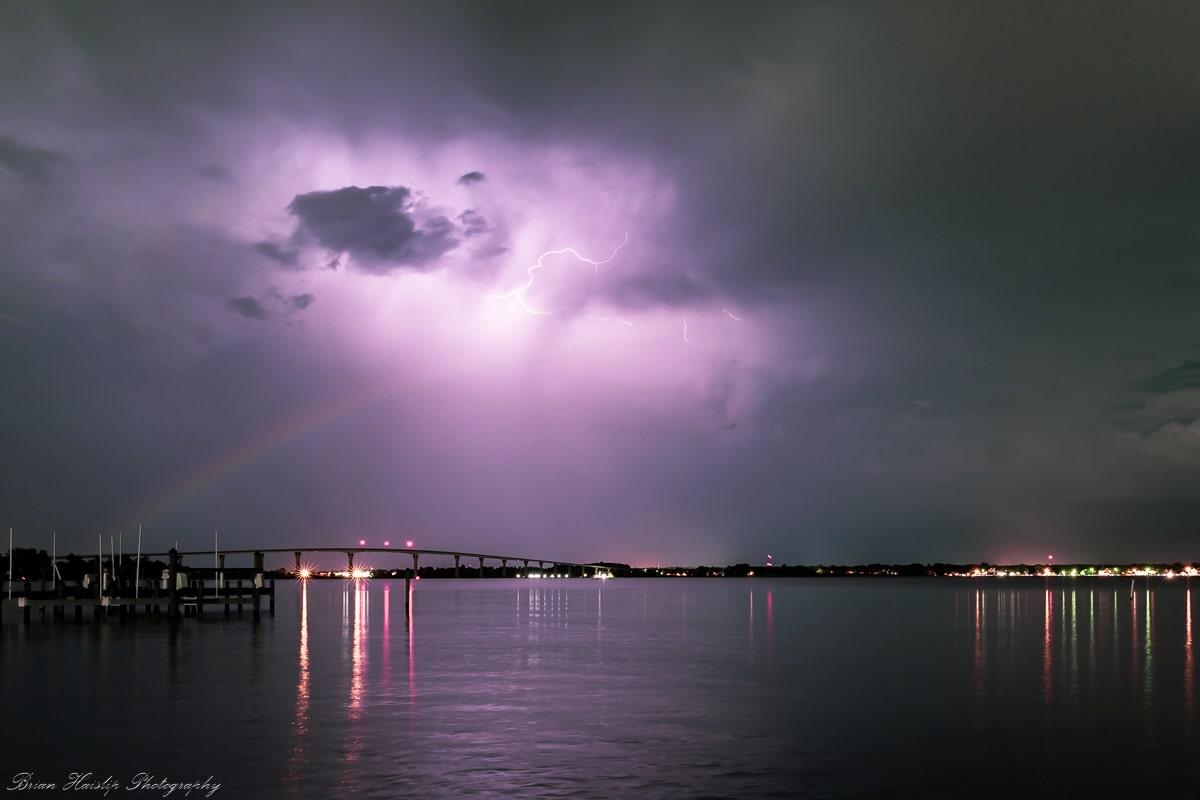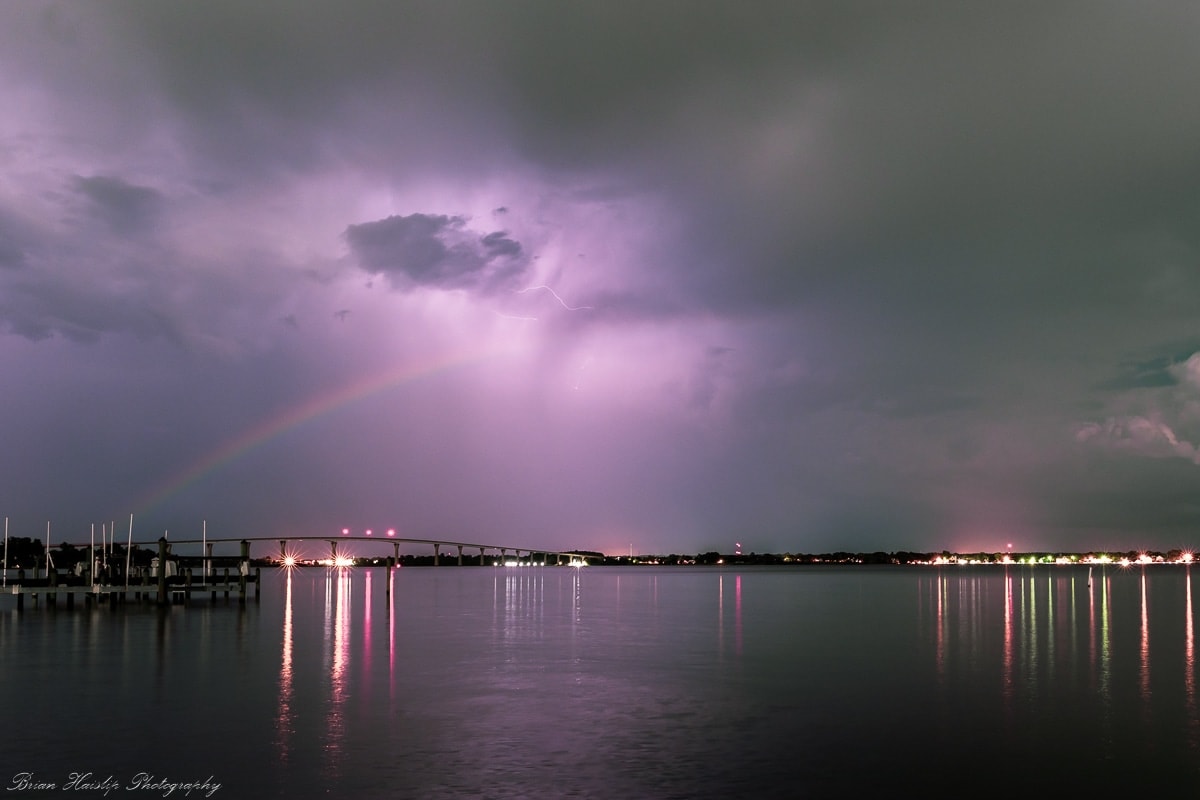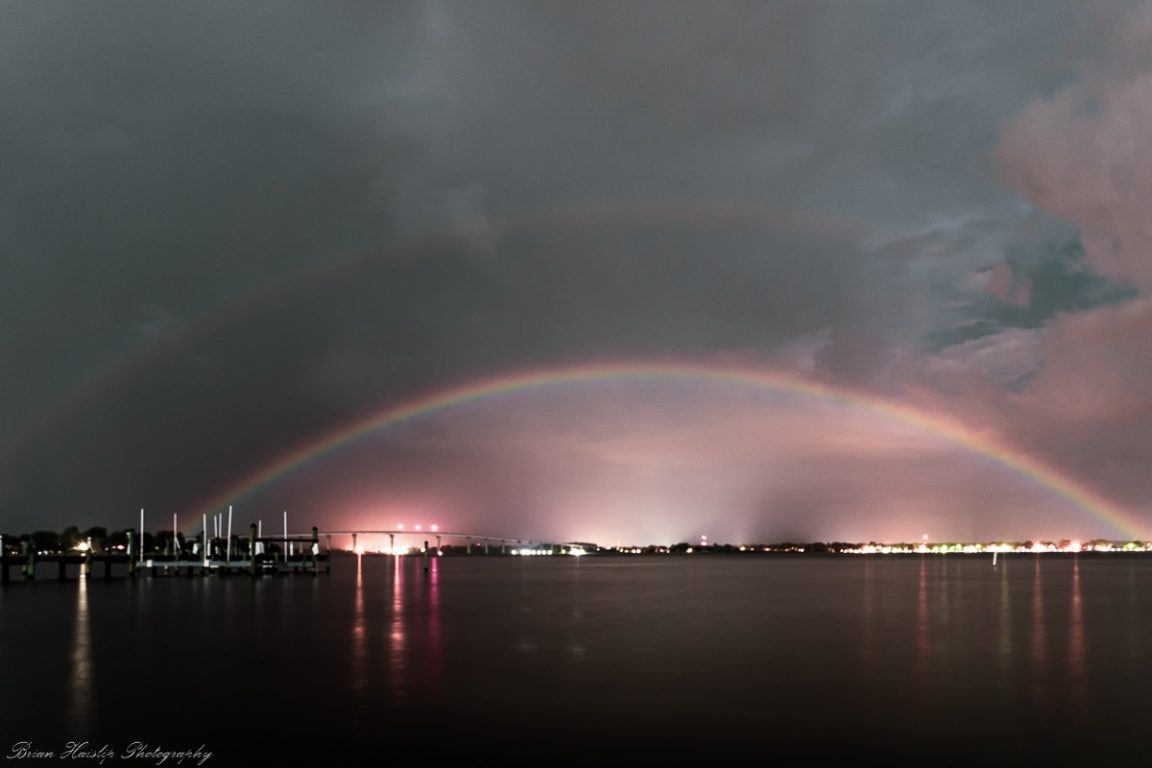Imagine witnessing a phenomenon so rare and captivating that it leaves you awestruck. This is exactly what happened to Brian Haislip, a passionate storm photographer. In the quiet of Lexington Park, Maryland, Brian encountered a mesmerizing sight – a double moonbow. This extraordinary event unfolded during a serene night, adorned with a lightning storm, presenting a spectacle that beautifully intertwined the ferocity of lightning with the peacefulness of a moonbow.
The Art of Storm Photography: Brian Haislip’s Passion
Brian Haislip isn’t just any photographer; he’s a storm enthusiast who revels in capturing the raw beauty of nature. His dedication to storm photography is unparalleled. One night, when the thunder of a passing storm beckoned, Brian couldn’t resist the call. With camera in hand, he set out, not just to capture the storm but to immortalize a moment that would soon reveal itself as nothing short of magical.

A Night of Discovery: The Emergence of the Double Moonbow
As the storm subsided, and the night seemed to quiet down, something extraordinary happened. A radiant formation emerged in the sky – a double moonbow, illuminated by the moon’s gentle light and accented by the occasional streaks of lightning. This wasn’t just a visual treat; it was a rare cosmic event, where the elements aligned to create a spectacle of color and light.

The Allure of the Moonbow: A Photographer’s Delight
For Brian, this was more than a photo opportunity; it was a chance to capture a fleeting moment of natural wonder. The double moonbow, with its ethereal colors, was a sight to behold and a challenge to capture. With skill and precision, Brian adjusted his camera settings, ensuring that each shot would do justice to this rare phenomenon. The resulting images are a testament to both the beauty of nature and the skill of a photographer who knows how to capture it.
The Science Behind Moonbows
To appreciate the art of moonbow photography, one must first understand the science that creates this natural wonder. Moonbows occur when the light from a near-full moon, typically during a clear, moist night, is refracted through raindrops, mist, or even a waterfall’s spray. The conditions must align perfectly, as the moon’s light is significantly fainter than the sun, requiring a darker sky and more significant moisture in the air.
Key Elements for Moonbow Formation:
- Bright moon (near-full moon phase)
- Clear skies with moisture (rain, mist, or waterfall spray)
- Specific alignment of the moon, moisture, and viewer
Technical Aspects of Moonbow Photography
Capturing a moonbow requires more than just being at the right place at the right time; it demands technical expertise and the right equipment. The faint light of the moonbow necessitates specific camera settings to accurately capture its colors and details.

Essential Camera Settings for Moonbow Photography:
- Low ISO: To reduce noise, especially in low-light conditions.
- Long Exposure: To allow enough light to enter the camera, capturing the faint moonbow.
- Wide Aperture: To maximize the amount of light entering the lens.
- Stable Tripod: Essential for long exposure shots to prevent camera shake.
- Remote Shutter Release: To further minimize camera movement.
Connect with the Artist: Explore More of Brian Haislip’s Work
For those captivated by Brian’s story and his stunning photography, more of his work can be explored at his Facebook page, Brian Haislip Photography. Here, you’ll find a gallery of images that showcase the beauty of storms and the many other natural wonders Brian has captured through his lens.





